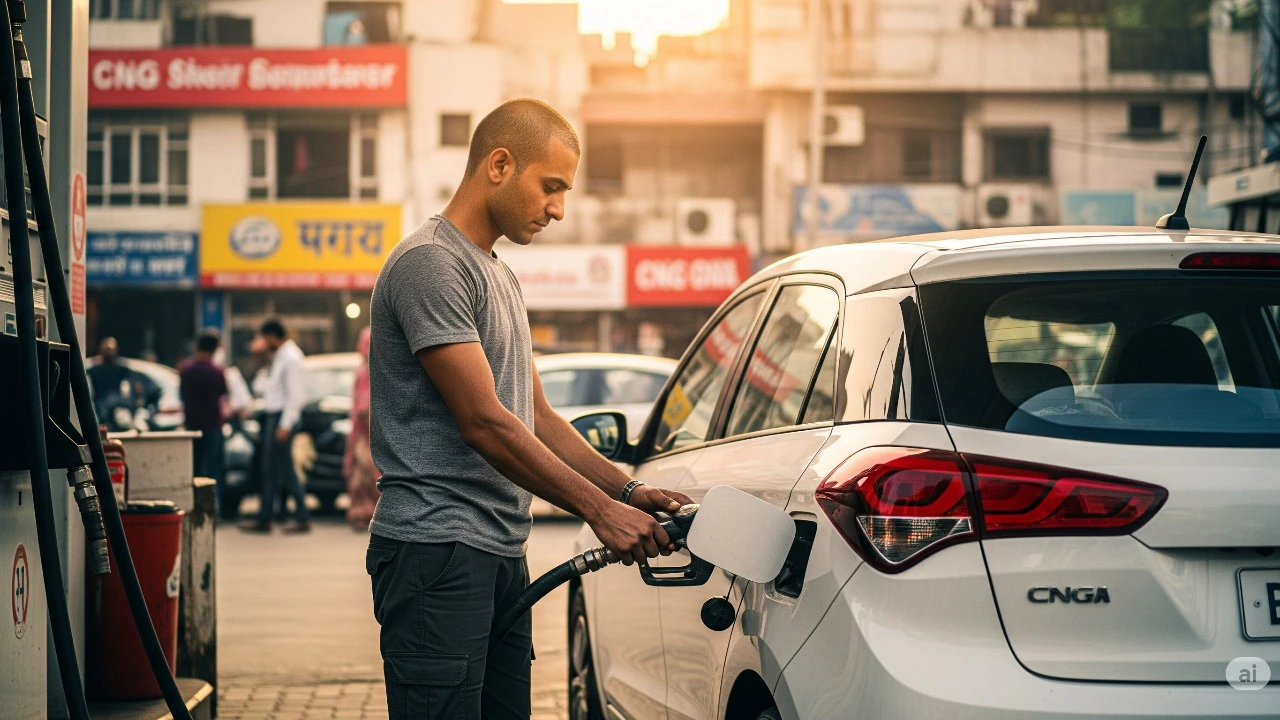Delhi’s latest pollution control policy denying fuel to diesel vehicles over 10 years old and petrol vehicles over 15 years old, is a coercive measure that doesn’t make sense. The entire focus here is on the age of the vehicle and not how much it has run or how it has been maintained. The measure by the Delhi government disincentivises proper upkeep of vehicles that makes them less polluting. This also cheats people who paid road tax for 15 years but can get to drive their vehicles for just 10 years.Delhiites, who breathe air worse than cigarette smoke, endure scorching temperatures that can melt roads, and navigate a slew of challenges just by the virtue of being born in the national capital, are now facing this heavy-handed pollution control measure.The policy, enforced through Automatic Number Plate Recognition (ANPR) cameras at 350 fuel stations, has sparked widespread criticism within days of its implementation from all sections.This Orwellian law, reminiscent of a surveillance state, imposes hefty fines of Rs 10,000 for four-wheelers and Rs 5,000 for two-wheelers, with the threat of vehicle impoundment or scrapping. Fuel station owners also face severe legal repercussions for non-compliance. While Delhi has grappled with severe air pollution since the 1990s, banning nearly a crore vehicles from the roads is counterproductive for several reasons. Here’s why this move by the Delhi government is mindless coercion.1. WILL GOVT RETURN 5 YEARS’ TAX TO DIESEL VEHICLE OWNERS?Diesel vehicle owners in India pay road tax for a 15-year vehicle lifespan. But Delhi’s policy says the vehicles cannot be used after just 10 years. This discrepancy is making lakhs of vehicle owners question the new law and its fairness.Sushant Sareen, senior fellow at Observer Research Foundation (ORF), wrote on X on Wednesday, “Single most stupid rule. Scrap a polluting vehicle even if it’s 1 year old; allow a non polluting vehicle even if it’s 20 years old. Enforce pollution norms strictly. But scrapping vehicles just on age of vehicle is a brainless thing to do. Since it’s NGT dictated no one wants to challenge this foolishness (sic).”The bigger question is, will the government refund five years’ worth of road tax to diesel vehicle owners affected by the 10-year ban? And if so, how and when?2. SCRAPPING WELL-MAINTAINED VEHICLES WITH VALID PUCThe blanket ban disregards the condition of the vehicles and penalises even those with valid Pollution Under Control (PUC) certificates.This subjects the decades-old PUC certificate system to scrutiny. Many on social media said that if a valid PUC is of no relevance and only the vehicle’s age determines the emission levels, then the pollution-check certificate system should be dismantled.Notably, the tail-pipe emission of a vehicle depends on the vehicle’s age, make, model, kilometres driven, and overall fitness, suggesting maintenance matters more than age alone.An X user, Abhay Anand said, “Bravo Delhi govt! Ban 10-yr-old cars with PUCs, ignore the absurdity, keep taxing us silly, and leave the middle class broke with no compensation. Nothing screams “pollution fix” like forcing loans for shiny new rides while luxury SUVs guzzle fuel. Pure genius! (sic)”.3. FIRST WORLD POLICY IN THIRD-WORLD INFRASTRUCTUREDelhi’s stringent vehicle ban mirrors policies in developed nations but ignores our infrastructural realities.In Delhi, roads and flyovers built by the government crumble in far lesser time than the end-of-life time that the government is putting on the cars. Its focus should be on better and sturdier infrastructure.A host of issues are likely to arise soon, including whether public transport can accommodate those affected by the vehicle ban, whether adequate scrapping infrastructure exists for millions of cars, and whether scrapping itself will contribute to pollution.The push is very well towards e-vehicles (EVs), which lack supportive infrastructure. Several housing societies in NCR have been reported as denying permission to install charging points for EVs.The vehicle ban, thus, seemingly burdens not only citizens but also the city’s already strained facilities.4. DELHI GOVERNMENT GOING FOR SOFT TARGET?Delhi’s new policy on banning “old” vehicles is seemingly a soft target, and conveniently sidesteps other factors that contribute to the air pollution crisis that require a larger political oversight.Road dust, which even the Supreme Court flagged, and construction dust are not monitored or addressed. In winters, Delhi becomes a gas chamber because of stubble burning in neighbouring states. Addressing these factors requires political will. It seems the Delhi government has chosen to act tough on vehicles – a move that will impact the middle class, which is a soft target.5. PRIVATE CARS SMALL PART OF POLLUTION POOLVehicular emissions, while significant, aren’t Delhi’s only source of air pollution. Also, private vehicles are a smaller part of the polluting category.According to a 2024 Centre for Science and Environment (CSE) study, motor vehicles accounted for 51.5% of local PM2.5 emissions in Delhi between October 12 to November 3, 2024. Of this, two- and three-wheelers accounted 50%, and heavy-duty vehicles make up 30%, while private cars contribute around 20%.But there are regional sources like stubble burning, which contribute up to 38% of the total PM2.5 on peak days. Then there is road dust, too, which makes up 3.6–4.1% of local PM2.5 pollution in early winter (October–November). However, a 2015 study by IIT Kanpur found it can contribute up to 38% of PM2.5 over a full year, especially in dry seasons.Construction also reportedly contributes 6.7–7.9% to the air quality.Focusing on private vehicles, hence, diverts attention from these broader air pollution sources.The new law may seem well-intentioned to many, but clearly overlooks practical realities and broader pollution sources.- EndsPublished By: Anand SinghPublished On: Jul 3, 2025Must Watch
